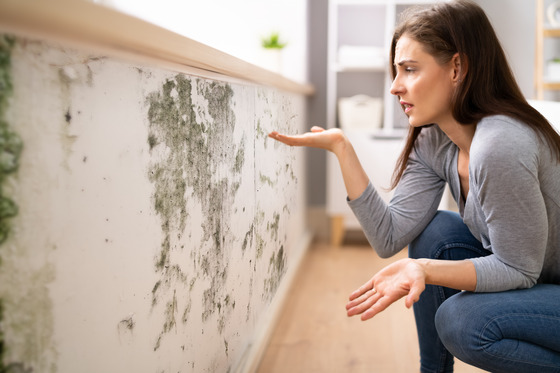4 min read
While mold plays an essential ecological role in the environment, it can negatively affect your home if left untreated. A mold growth problem can have health impacts on vulnerable individuals like infants, the elderly, or those with respiratory issues. More importantly, it can spread across surfaces, eat away at building materials, and compromise the structural integrity of your home.
Fortunately, there are steps you can take today to safeguard your property and keep everyone safe. Below are some ways how to prevent mold on a roof, ceiling, and walls – and save yourself from headaches and costly repairs.
Open the Windows When Using the Bathroom or Kitchen
You may not notice it, but daily activities like taking a shower, boiling water, cooking dinner, or doing laundry can increase the humidity levels inside your home. Without proper ventilation, these activities allow condensation to settle on your ceiling, ultimately inviting mold.
This is why it’s practical to open windows when using your bathroom or kitchen. Doing so helps the excess humidity flow out of the house instead of building up. Alternatively, using retrofitted air vents can vent the heat or humidity produced by appliances to the outside – instead of your ceiling or the attic.
Keep the Doors Closed
While you have your windows opened as you cook or do the laundry, it’s a good practice to close the door leading to the other rooms at the same time. This lets the excess moisture escape through the window instead of flowing further inside your house.
Monitor the Air Inside Your Home
One of the best and most straightforward ways to prevent mold in your home is to monitor the air inside. Proper ventilation helps keep humid air from getting trapped in your house, while improved air circulation assists in reducing moisture levels by drying wet areas quickly.
Here are some ways to enhance the airflow in your home:
- Opening windows and doors if the weather allows it.
- Leaving enough space between furniture and walls.
- Regularly opening cupboard and cabinet doors in damp rooms.
Another factor you want to keep an eye on is your indoor humidity. The EPA recommends keeping its level between 30 and 60%. A moisture meter can help you measure humidity in possible problem areas in your house so you’ll know when to use the dehumidifier.
Dry Damp or Wet Surfaces Immediately
Since mold is attracted to excess moisture, drying wet surfaces immediately keeps it from growing inside your home.
Here are some simple tasks worth adding to your to-do list for preventing microbial growth:
- Wipe the floor and walls dry right after taking a shower.
- Dry spills from leaks immediately.
- Don’t let damp or wet items lie around the house.
- Don’t leave wet clothes inside the washing machine.
- Always hang wet clothes to dry outside.
- In case of a flood, remove carpets, furniture, and bedding that cannot be completely dried.
Have Your Roof Inspected and Repaired
One of the main causes of mold on ceiling tiles is roof leaks, so it’s a smart move to enlist regular roof inspections and repairs. Doing so helps you not only prevent microbial growth, but also avoid the mess and stress of leaky ceilings.
Besides routine inspections, cleaning roof gutters regularly also helps in roof mold prevention. A gutter full of dead leaves and debris can cause the water to pool and back up. When this happens, the standing water on your roof will find other ways to go down – like dripping through your ceiling and causing leaks. Ensuring water can go down from your roof and away from your property can go a long way in avoiding leaks and the mess they can create inside your home.
Get Expert Help To Address Existing Mold in Your Home
These are practical tips that can help you protect your home from mold. However, if you already see signs of microbial growth on your walls and ceilings, it’s imperative that you call certified experts for professional mold remediation immediately. Allowing mold to grow and spread will not only compromise your building’s structural integrity but also negatively impact your health and comfort.
Our mold removal experts at Restoration 1 of Austin are here to address the contamination safely and thoroughly for you. Contact us today, and let’s start getting your home back to normal.


